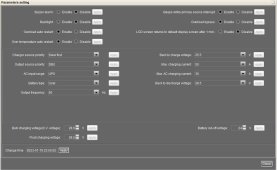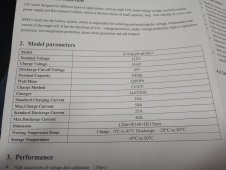OK - almost embarrassed to ask this. I just bought 4 Chins 12V LifePo 100AH batteries. Eventually they will be in series configuration but first I am trying to fully charge each one individually to 100%. Chins says they are shipped mostly discharged.
I have a Dakota Lithium charger rated for 10Amps specifically for 12V LiFePo batteries. How long should it take to fully charge one battery? Should it be 100/10 = 10 hours?
Same topic: I also have a bench power supply which I set to 14.5 OC voltage and 5A max current. A series ammeter show it is pumping 5A into the battery but it seems to be taking forever (>12 hrs) to charge. When I hook up the bench supply, it indicates CC mode and the voltage drops to about 13.3.
Just not sure if I am doing it right.
Thanks in advance!
I have a Dakota Lithium charger rated for 10Amps specifically for 12V LiFePo batteries. How long should it take to fully charge one battery? Should it be 100/10 = 10 hours?
Same topic: I also have a bench power supply which I set to 14.5 OC voltage and 5A max current. A series ammeter show it is pumping 5A into the battery but it seems to be taking forever (>12 hrs) to charge. When I hook up the bench supply, it indicates CC mode and the voltage drops to about 13.3.
Just not sure if I am doing it right.
Thanks in advance!









